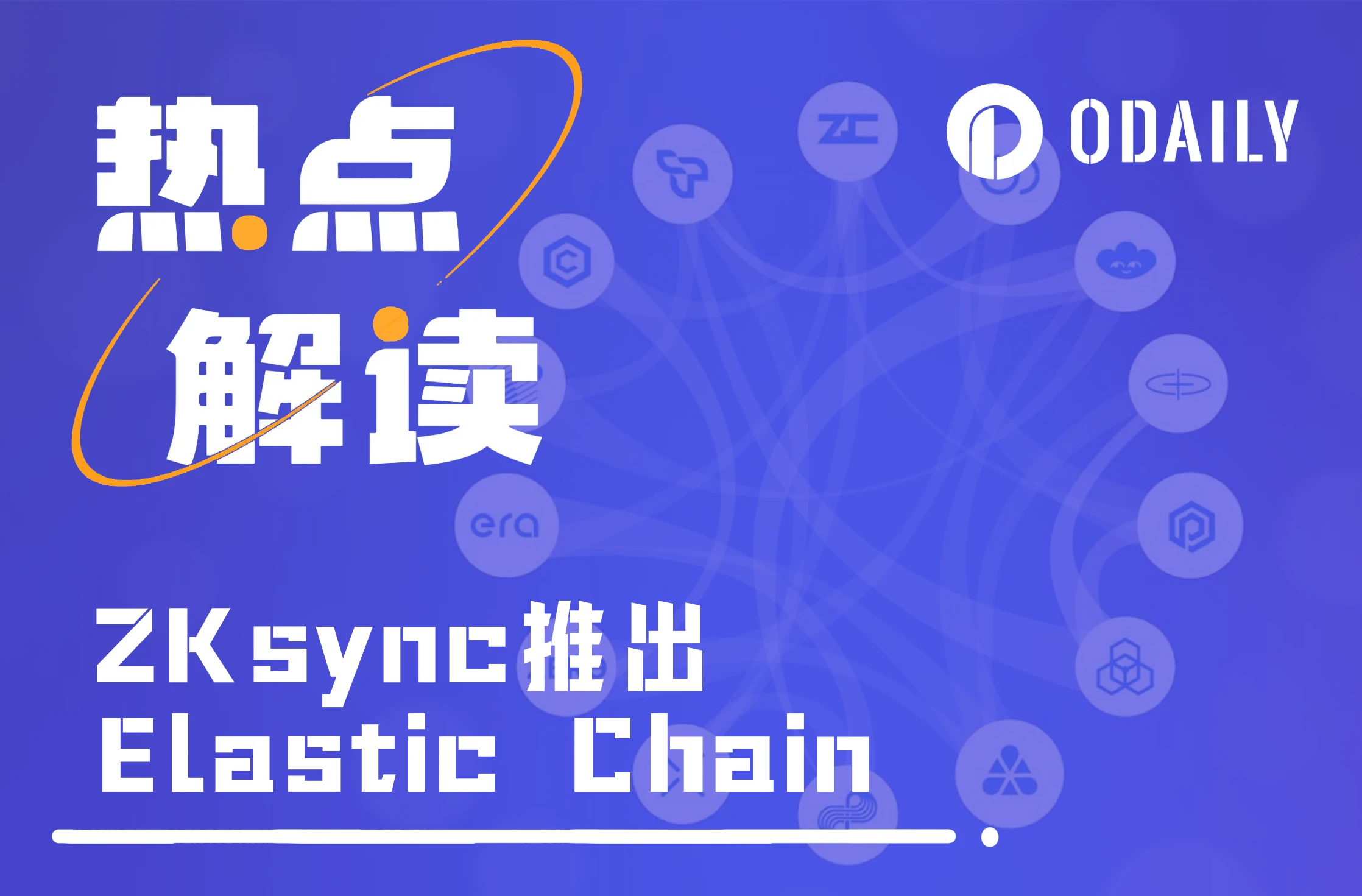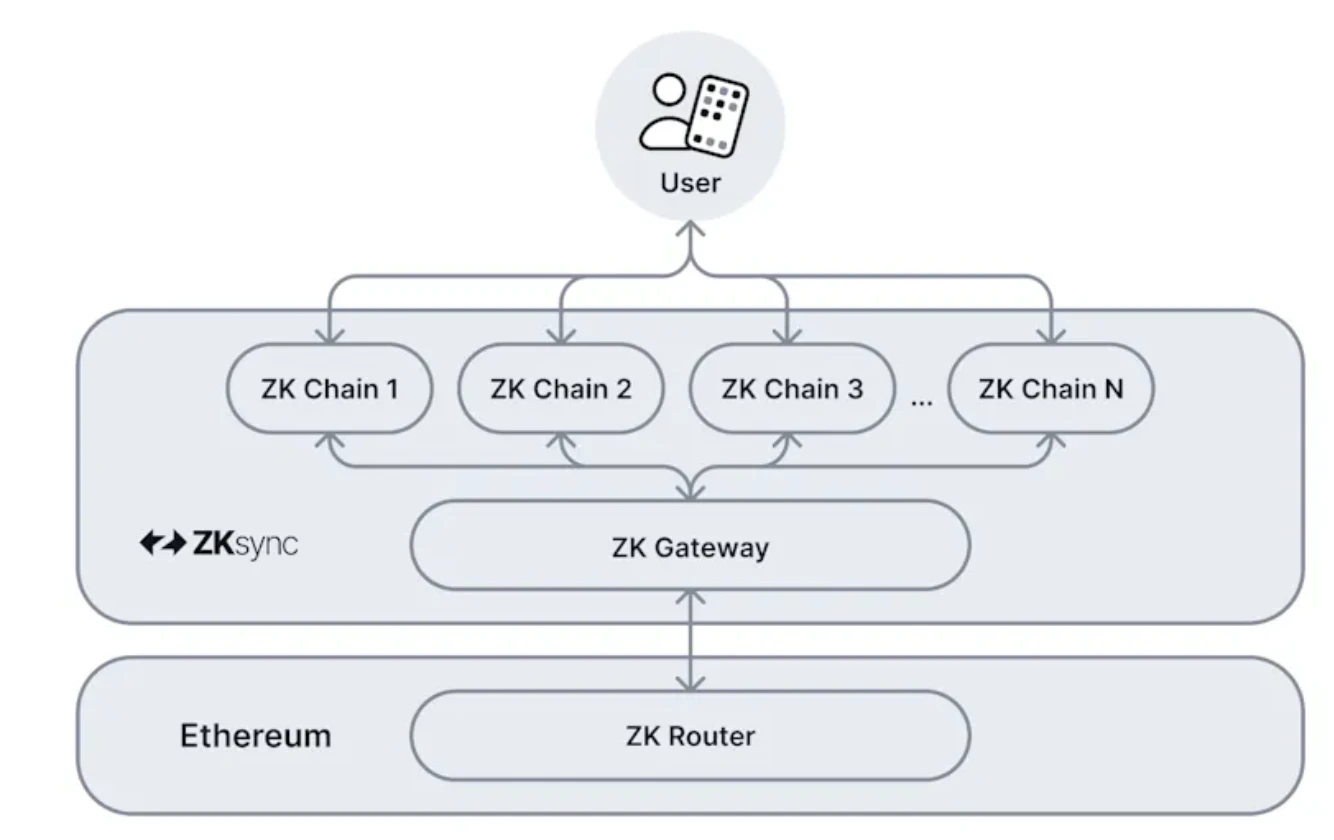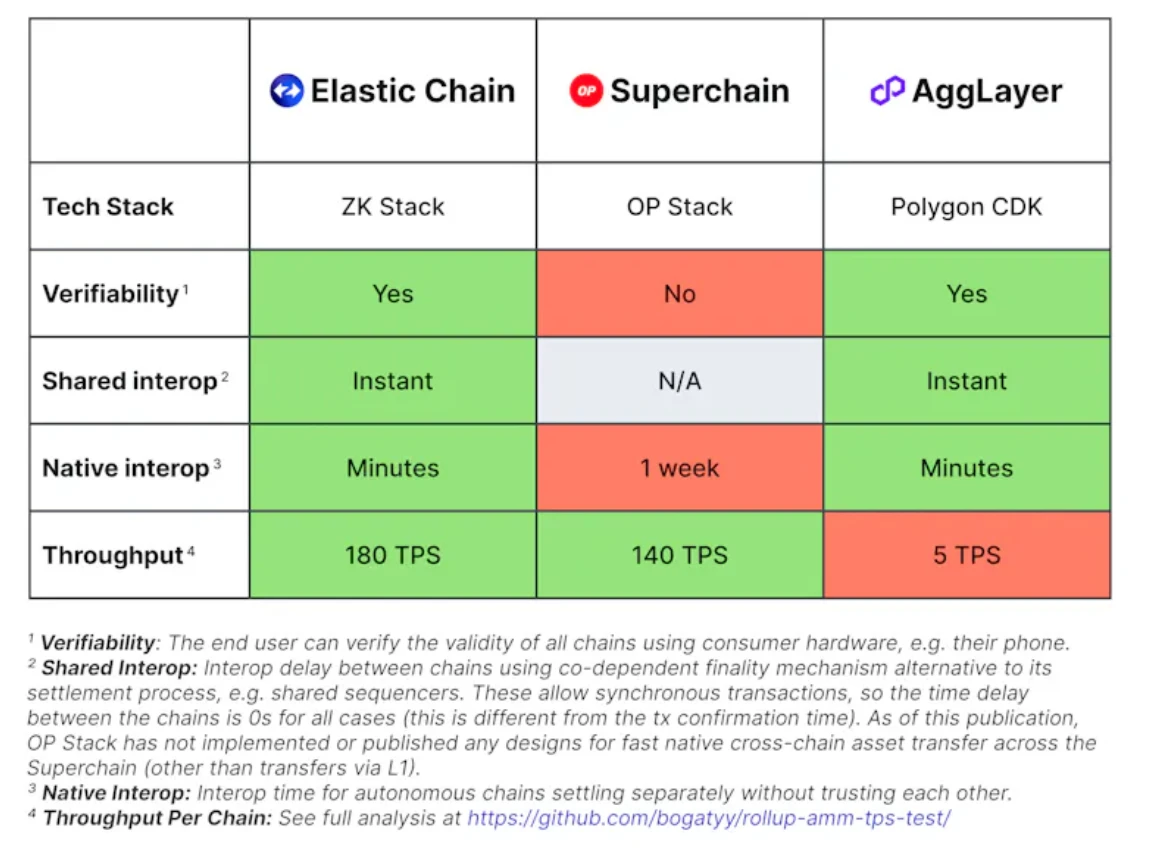Original | Odaily Planet Daily ( @OdailyChina )
Author: Nan Zhi ( @Assassin_Malvo )

Yesterday, ZKsync announced the launch of Elastic Chain, an infinitely scalable ZK rollup network. This idea was first proposed in 2022 and was originally called bridgeless hyperchain. ZKsync said that this solution realizes native, trustless, and low-cost interoperability between ZK chains. Elastic Chain is not a new L1/L2 chain, but a solution to connect various ZK networks. Odaily will explain its functions and features in this article.
Project background and original intention
Ethereums Rollup-centered development roadmap successfully reduced transaction fees, increased transaction speeds, and the networks processing power. However, as Layer 2 began to overflow, liquidity was fragmented on the one hand, and reinventing the wheel on various chains on the other hand resulted in uneven product quality and poor user experience.
Although various official and third-party cross-chain bridges are designed to solve the liquidity problem, cross-chain bridges still have high operating costs. ZKsync pointed out that because cross-chain bridges need to integrate liquidity on each chain, the cost is usually passed on to users, up to 1%-2% of the transaction value, and this cost will increase exponentially with the increase in the number of Layer 2. ZKsync further pointed out that the three largest hacker attacks in the DeFi protocol all involved cross-chain bridge issues, with losses exceeding US$2 billion.
Therefore, ZKsync aims to create a solution that allows users to use various chains without transferring funds through cross-chain bridges, so that users can interconnect thousands of chains without being aware of it, and only need to focus on the interactive products themselves.
Elastic Chain Explanation
According to the official definition, ZKsync 3.0 (Elastic Chain) is an infinitely scalable ZK chain network (including ZK solutions such as rollup, validium, volitions, etc.), protected by mathematics, and seamlessly interoperable with a unified and intuitive UX . So what are the characteristics of Elastic Chain, and how is it different from unified solutions such as Optimisms Superchain concept?
First of all, the characteristics of the elastic chain include:
Seamless cross-chain usage: Users can use the same address across multiple chains, and only need one signature to interact with any user and smart contract in the elastic chain ecosystem (without cross-chain bridge funds). Supports the use of any liquid token to pay for gas fees, and can also be sponsored by DApps to allow users to operate for free.
Elastic expansion: In economic terms, elasticity refers to the ability to increase supply in proportion to demand growth, while elastic architecture here allows the blockchain to expand capacity infinitely by adding new instances to match usage demand. As more users join and transactions increase, the system can continue to expand without affecting performance, verifiability, or decentralization.
Mathematical guarantees: All transactions are verified and executed by Ethereum, without the assumption of an honest majority. ZKsync says that in the long run all transactions will be verified by every user with a smartphone.
Elastic Chain Architecture
Elastic Chain is composed of three parts in terms of architecture, namely the ZK chains themselves, the ZK Gateway, and the ZK Router. The ZK Gateway is the most critical part of Elastic Chain, which is equivalent to inserting a middleware between the ZK chain and the Ethereum mainnet, charging each ZK chain, and then performing certain data processing on behalf of Ethereum before publishing it to Layer 1.

ZKsync stated that by joining the Elastic Chain, each ZK chain can achieve finality faster, L1 reduces verification costs, and each chain is independent and can exit the Elastic Chain at any time.
But joining Elastic Chain is not free. The ZK Gateway is operated by a group of decentralized, trustless validators. Validators need to pay certain ERC-20 tokens to participate in verification ( for example, it may be ZK tokens ), and validators will charge for data sent to the gateway.
Competitive product comparison
ZKsync was compared with other integrated solutions Superchain and AggLayer in four aspects, and Elastic Chain won. The specific angles and data are as follows:
Verifiability: Users can verify the validity of all chains using consumer hardware, such as mobile phones.
Shared interoperability: Interoperability latency between chains, using a shared finality mechanism to replace the settlement process (such as a shared sequencer), allowing synchronized transactions, so the time delay between chains is 0 seconds in all cases. ZKsync said that OP Stack has not yet released any design for fast cross-chain asset transfers across Superchain.
(Odaily Note: In the Elastic Chain solution, each chain performs on-chain calculations and then sends the results to the ZK gateway. The chains are actually unrelated and unaffected by each other, so there is no problem of inter-chain delay.)
Native interoperability: The time it takes for independent chains to settle independently without trusting each other.
Throughput: Uniswap was used for TPS testing.

ZKsync wants to kill Ethereum?
From the direct results, Elastic Chain seems to be an effective solution to the current proliferation of L1 and L2. At a time when the threshold for launching chains is getting lower and lower, the path taken by the original protocol is to continuously add new supported networks as the number of chains increases. Based on Elastic Chain, the original protocol can directly link to the chains and projects newly added to the network, saving development and publicity resources. For users, there is no need to use cross-chain bridges to transfer funds between chains.
But going deeper, Odaily Planet Daily believes that this further reflects that the development of the Crypto ecosystem has been imprisoned. In the absence of breakthroughs in hardware and underlying technologies, some elements and principles can only be sacrificed in exchange for the so-called improvement in experience.
First of all, it is a false proposition that the cost of cross-chain bridge operation will increase exponentially with the increase of Layer 2, or users will not and do not need to cross chains between many chains . At present, funds and users are mainly accumulated on a few chains, and many chains are already ghost towns. Will the use of applications on these ghost towns without the cross-chain step attract more users? The answer is obviously no. Even if Layer 2 is increased, as long as there is no sufficiently attractive product, users will basically have no demand for cross-chain. Let the ecology and network that should be damned disappear into the smoke and dust, rather than forcibly prolonging its life.
Lets look at another question. Why do all Layer 2s choose to use the Ethereum mainnet as a DA or settlement layer? In addition to Ethereums legitimacy, decentralization is also a key factor . Ethereum is not incapable of improving its performance and reducing costs, but someone still needs to stick to this fundamental principle. From Solana being called the computer room chain in 2021 to the latest MegaETH, which claims to have reached 100,000 TPS (but has extremely high hardware requirements, and only one sorter is active at a time), the degree of centralization is getting stronger and stronger.
Finally, Ethereum, as the settlement layer, collects taxes from the central government, and the situation of Layer 2 separatism may change. Whether Elastic Chain or a competitor in the future occupies a certain market scale, some small ecosystems will have to join the network and pay taxes to this middle layer in order to obtain traffic and funds, and Ethereums Layer 2 income will rely on this ultimate overlord, forming a situation where the emperor is held hostage to control the princes.
But there is good news at the end. If ZK tokens are finally required as the entry threshold for validators, ZK may be saved.










